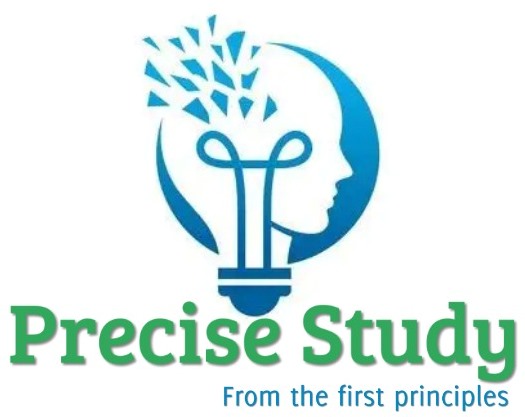Depreciation and appreciation are an important terms in business accountings. Appreciation is an increase in an asset’s value over time, while depreciation is a decrease in an asset’s value over time. Appreciation occurs due to factors like high demand or market popularity, increasing the asset’s worth. A good example of assets that commonly experiences appreciation is the land. Depreciation results from wear and tear, obsolescence, or negative economic factors, reducing its worth.
Most of the things when being used experiences wear and tear. With time, their value and usefulness reduces in the long run. The loss of value due to tear and wear is referred to as the depreciation.
To determine depreciation, we simply multiply the given rate of depreciation of an item with its current value.
If the current value of an item is p and it’s depreciation rate is r, the after a given period of time, it will depreciate by pr. It’s new value after depreciation thus becomes p-pr.
Example
An office bought a new printing machine at $30000. It’s depreciation is set to be 20% every year. What shall be it’s value 3 years later?
solution
after one year, the printer depreciates by 20% x $30000 = $6,000
It’s new value becomes 30,000 -6,000 = 24,000
after another year, it will depreciate by 20% x 24000 = 4,800
it’s new value becomes 24,000 – 4,800 = 19,200
After three years it will depreciate by 20% x 19,200 = 3,840
New value after 3 years will thus be 19,200 – 3, 840 = 15, 360
As we can see, the machine value will reduce by almost have after three years of use.
challenge
can you be able to find out after how many years the printer will be totally useless?
General depreciation formulae
sometimes, machinery can live very many years despite them depreciating in value. Some machines are made soo well such that we can use them for many years. Such machines depreciates slowly . However, we need to calculate their depreciation value so that we can plan their replacement.
Let us set the value of an item =p and let it’s depreciation rate =r.
We want to find the value of the item for arbitrary number of years n.
we will try to find depreciation and value of the item for the first few years of it’s existence.
depreciation for n years
After first year, it depreciates to pr and it’s value becomes p-pr
second year value
current value = p-pr
depreciation = (p-pr)r = pr-pr2
new value = p-pr – (pr-pr2) = p – pr – pr +pr2 = p -2pr +pr2
3rd year value after depreciation
current value = p -2pr +pr2
depreciation = (p -2pr +pr2)r = pr – 2pr2 +pr3
new value = p -2pr +pr2 – (pr – 2pr2 +pr3 ) = p-3pr+3pr2 – pr3
4th year value
current value = p-3pr+3pr2 – pr3
depreciation = (p-3pr+3pr2 – pr3 )r = pr – 3pr2 +3pr3 -pr4
new value = p-3pr+3pr2 – pr3 – ( pr – 3pr2 +3pr3 -pr4 )
= p-4pr +6pr2 -4pr3 + pr4
5th year value
current value = p-4pr +6pr2 -4pr3 + pr4
depreciation =(p-4pr +6pr2 -4pr3 + pr4)r = pr-4pr2 + 6pr3-4pr4 +pr5
new value = p-4pr +6pr2 -4pr3 + pr4 – (pr-4pr2 + 6pr3-4pr4 +pr5)
=p-5pr+10pr2 – 10pr3 +5pr4 -pr5
The expression of value for every new year is becoming length and complicated. However, a certain pattern can be determined from the expressions.
let us list the values for the first 5 years:
- p-pr
- p -2pr +pr2
- p-3pr+3pr2 – pr3
- p-4pr +6pr2 -4pr3 + pr4
- p-5pr+10pr2 – 10pr3 +5pr4 -pr5
we will now factor out p which is constant in every term and expression:
- p(1-r)
- p(1-2r+r2) = p(1-r)2
- p(1-3r+3r2-r3) = p(1-r)3
- p(1-4r +6r2 -4r3 + r4 ) = p(1-r)4
- p(1-5r+10r2 – 10r3 +5r4 -r5)=p(1-r)5
From the expressions above we can see that the expression is a binomial expansion of (1-r)
please note that we can express 1 as 1 = (1-r)0
for the nth year it is obvious the expression will be A = p(1-r)n
where A is the value of an item after depreciating n years at rate of r per year
Example
A machine has it’s value at $1000,000 while new. Determine the number of years the machine will be used before it becomes disposable at $1000.
Appreciation

if item is at value p, it’s new value after appreciation of rate r will be p+pr
after 2 years, it will appreciate to (p+pr)r so that it’s value = p+pr +pr+pr2 = p+2pr+pr2 = p(1+2r+r2)=p(1+r)2
in the third year, it will appreciate by ( p+2pr+pr2 )r = pr+2pr2+pr3
it’s new value will become p+2pr+pr2 +pr+2pr2+pr3 = p+3pr+3pr2 pr3 = (1+r)3
We can be able to show that the appreciation value of the item after a number of years will be given by A=p(1+r)n where n is the number of years.

